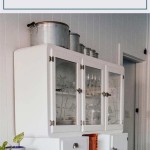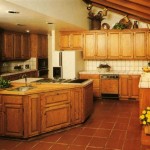Can You Use Gel Stain On Oak Cabinets? A Comprehensive Guide
Oak cabinets are a common feature in many homes, prized for their durability and distinctive grain pattern. However, homeowners often seek to update the appearance of their oak cabinets without undertaking a complete replacement. Gel stain presents itself as a potential solution, offering the ability to change the color and enhance the existing beauty of the wood. This article addresses the viability of using gel stain on oak cabinets, exploring its advantages, disadvantages, necessary preparation, and application techniques, thereby providing a detailed understanding of the process.
The suitability of gel stain for oak cabinets hinges on several factors, primarily the desired outcome and the existing condition of the cabinets. Oak, being a porous hardwood, readily absorbs stains. Traditional stains penetrate the wood fibers, altering the color from within. Gel stain, in contrast, is a thicker, more viscous product that sits on the surface of the wood, creating a film-like layer. This property has significant implications for its application and performance on oak cabinets.
Before embarking on a gel staining project for oak cabinets, a thorough understanding of the material's characteristics and the intended aesthetic effect is crucial. Proper preparation and application are equally critical to achieving a desirable and long-lasting finish. Understanding and addressing these aspects are essential for a successful cabinet transformation.
Understanding Gel Stain and Its Properties
Gel stain differs significantly from traditional wood stains in its composition and mode of application. It is typically oil-based or water-based, containing a gel-like binder that suspends the pigments. This consistency results in a stain that does not readily drip or run, making it easier to apply on vertical surfaces, such as cabinet doors. The thickness also means that gel stain does not penetrate the wood as deeply as traditional stains; it primarily coats the surface.
The primary advantage of gel stain lies in its ability to adhere to a variety of surfaces, including those that are already finished or difficult to stain directly. This makes it an attractive option for oak cabinets that have a pre-existing clear coat or varnish. Gel stain can be applied over these coatings, eliminating the need for extensive stripping and sanding down to bare wood. However, this advantage also necessitates proper surface preparation to ensure adequate adhesion.
The opacity of gel stain is another key characteristic. It tends to provide a more uniform color than traditional stains, which can accentuate the natural variations in the wood grain. While this can be desirable for achieving a consistent look, it can also obscure the inherent beauty of the oak. Therefore, the choice between gel stain and traditional stain often depends on the desired level of grain visibility and color uniformity.
Furthermore, gel stain offers a wider range of color options compared to some traditional stains. This allows for greater flexibility in achieving specific design goals. However, its surface-coating nature also means that scratches and abrasions can be more visible, as they expose the underlying layer beneath the stain. This necessitates the application of a durable topcoat to protect the stained surface and enhance its longevity.
Preparing Oak Cabinets for Gel Stain
Proper preparation is paramount to the successful application of gel stain on oak cabinets. This process involves cleaning, sanding, and priming, each step contributing to the adhesion and overall appearance of the finished product. Neglecting any of these steps can lead to peeling, chipping, or an uneven finish, compromising the durability and aesthetic appeal of the stained cabinets.
The first step is thorough cleaning. Existing grease, grime, and dirt can prevent the gel stain from adhering properly. A degreasing cleaner, such as trisodium phosphate (TSP) or a commercially available cabinet cleaner, should be used to scrub the cabinet surfaces. It is crucial to rinse the cabinets thoroughly with clean water and allow them to dry completely before proceeding to the next step.
Sanding is essential for creating a slightly abraded surface that promotes adhesion. While extensive sanding down to bare wood is not typically required for gel stain, light sanding with a fine-grit sandpaper (e.g., 220-grit or 320-grit) is necessary. This process removes any existing gloss or shine, providing a better grip for the gel stain. It is crucial to sand evenly and consistently, paying particular attention to edges and corners. After sanding, the cabinets should be thoroughly wiped down with a tack cloth to remove all sanding dust.
Priming is an optional but often recommended step, especially for cabinets with a glossy or non-porous finish. A good quality primer designed for use with oil-based or water-based stains can improve adhesion and ensure a more uniform color. The primer should be applied in thin, even coats, following the manufacturer's instructions. Allow the primer to dry completely before proceeding to the gel stain application. Selecting the right primer, compatible with both the existing cabinet finish and the chosen gel stain, is crucial for optimal results.
For cabinets with significant damage, such as deep scratches or dents, wood filler may be necessary. The filler should be applied according to the manufacturer's instructions, allowed to dry completely, and then sanded smooth before proceeding with priming and staining. It is crucial to select a wood filler that is compatible with both oak and the chosen stain to ensure a seamless repair.
Applying Gel Stain to Oak Cabinets: Techniques and Considerations
The application of gel stain requires careful technique to achieve a smooth, even, and professional-looking finish on oak cabinets. The process involves several steps, including selecting the appropriate application method, applying thin coats, and allowing sufficient drying time between coats. The choice of application method and technique will significantly affect the final appearance and durability of the stained cabinets.
Gel stain can be applied using a variety of methods, including a brush, a rag, or a foam applicator. A brush is often preferred for its ability to work the stain into intricate details and corners. A rag is useful for wiping back excess stain and creating a more uniform color. A foam applicator can provide a smooth, even finish, especially on flat surfaces. The choice of method depends on personal preference and the desired aesthetic effect.
Thin coats are essential for achieving a uniform and durable finish. Applying too much gel stain at once can result in drips, runs, and an uneven color. It is better to apply several thin coats, allowing each coat to dry completely before applying the next. This allows the stain to adhere properly and prevents a buildup of excess material on the surface.
Drying time is crucial for the proper curing of the gel stain. The manufacturer's instructions should be carefully followed regarding drying times between coats and before applying a topcoat. Insufficient drying time can lead to a soft, tacky finish that is prone to scratches and damage. Adequate ventilation is also important during the drying process to ensure proper curing.
Once the gel stain has dried completely, a durable topcoat should be applied to protect the stained surface. A clear polyurethane or varnish is typically used for this purpose, providing a protective barrier against scratches, moisture, and UV damage. The topcoat should be applied in thin, even coats, following the manufacturer's instructions. Multiple coats may be necessary for added protection. The choice of topcoat should be compatible with the gel stain and the intended use of the cabinets. A matte, satin, or gloss finish can be selected to achieve the desired aesthetic effect.

How To Gel Stain Cabinets With Ease Diva Of Diy

How To Use Gel Stain On Cabinets The Good Bad

How To Gel Stain Cabinets With Ease Diva Of Diy

Gel Stain Color Recommendations

Easy Gel Stain For Those Oak Cabinets 320 Sycamore

How To Stain Oak Cabinetry Tutorial The Kim Six Fix

How To Gel Stain Cabinets Printable She Buys He Builds

Staining Cabinets Love This Stain The Stonybrook House

How To Glaze Cabinets With Gel Stain Adventures Of A Diy Mom

Pickled Oak Bathroom Vanity Transformation








